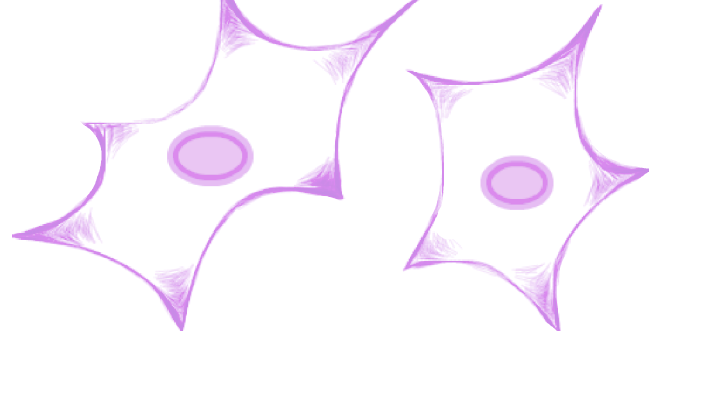Cell Senescence Entries for SOD2
- Cell Types
- Prostate epithelial
- Cell Lines
- M12
- Cancer Cell?
- No
- Method
- Overexpression
- Type of senescence
- Unclear
- Senescence Effect
- Induces
- Primary Reference
- Plymate et al. (2003) Increased manganese superoxide dismutase (SOD-2) is part of the mechanism for prostate tumor suppression by Mac25/insulin-like growth factor binding-protein-related protein-1. Oncogene 22(7)1024-34 (PubMed)
SOD2 Gene Information
- HGNC symbol
- SOD2
- Aliases
- GClnc1
- Common name
- superoxide dismutase 2
- Entrez Id
- 6648
- Description
- This gene is a member of the iron/manganese superoxide dismutase family. It encodes a mitochondrial protein that forms a homotetramer and binds one manganese ion per subunit. This protein binds to the superoxide byproducts of oxidative phosphorylation and converts them to hydrogen peroxide and diatomic oxygen. Mutations in this gene have been associated with idiopathic cardiomyopathy (IDC), premature aging, sporadic motor neuron disease, and cancer. Alternative splicing of this gene results in multiple transcript variants. A related pseudogene has been identified on chromosome 1. [provided by RefSeq, Apr 2016].
SOD2 Ontologies
- Gene Ontology
-
Process: GO:6357; regulation of transcription by RNA polymerase II
GO:72593; reactive oxygen species metabolic process
GO:6801; superoxide metabolic process
GO:302; response to reactive oxygen species
GO:303; response to superoxide
GO:1306; age-dependent response to oxidative stress
GO:1666; response to hypoxia
GO:1836; release of cytochrome c from mitochondria
GO:1889; liver development
GO:3032; detection of oxygen
GO:3069; acetylcholine-mediated vasodilation involved in regulation of systemic arterial blood pressure
GO:6749; glutathione metabolic process
GO:6979; response to oxidative stress
GO:7005; mitochondrion organization
GO:7507; heart development
GO:7568; aging
GO:7626; locomotory behavior
GO:8217; regulation of blood pressure
GO:8630; intrinsic apoptotic signaling pathway in response to DNA damage
GO:8631; intrinsic apoptotic signaling pathway in response to oxidative stress
GO:8637; apoptotic mitochondrial changes
GO:9314; response to radiation
GO:9409; response to cold
GO:9410; response to xenobiotic stimulus
GO:9791; post-embryonic development
GO:10042; response to manganese ion
GO:10043; response to zinc ion
GO:10269; response to selenium ion
GO:10332; response to gamma radiation
GO:10729; positive regulation of hydrogen peroxide biosynthetic process
GO:14823; response to activity
GO:19430; removal of superoxide radicals
GO:22904; respiratory electron transport chain
GO:30097; hemopoiesis
GO:31667; response to nutrient levels
GO:32496; response to lipopolysaccharide
GO:33591; response to L-ascorbic acid
GO:34021; response to silicon dioxide
GO:35900; response to isolation stress
GO:35902; response to immobilization stress
GO:42311; vasodilation
GO:42542; response to hydrogen peroxide
GO:42554; superoxide anion generation
GO:42743; hydrogen peroxide metabolic process
GO:43066; negative regulation of apoptotic process
GO:45429; positive regulation of nitric oxide biosynthetic process
GO:45599; negative regulation of fat cell differentiation
GO:46686; response to cadmium ion
GO:48147; negative regulation of fibroblast proliferation
GO:48666; neuron development
GO:48678; response to axon injury
GO:48773; erythrophore differentiation
GO:50665; hydrogen peroxide biosynthetic process
GO:50790; regulation of catalytic activity
GO:51602; response to electrical stimulus
GO:51881; regulation of mitochondrial membrane potential
GO:55072; iron ion homeostasis
GO:55093; response to hyperoxia
GO:71000; response to magnetism
GO:71361; cellular response to ethanol
GO:1902631; negative regulation of membrane hyperpolarization
GO:30335; positive regulation of cell migration
GO:1905461; positive regulation of vascular associated smooth muscle cell apoptotic process
GO:51289; protein homotetramerization
GO:8285; negative regulation of cell population proliferation
GO:43524; negative regulation of neuron apoptotic process
GO:1902176; negative regulation of oxidative stress-induced intrinsic apoptotic signaling pathway
GO:1315; age-dependent response to reactive oxygen species
GO:32364; oxygen homeostasis
GO:1904706; negative regulation of vascular associated smooth muscle cell proliferation
GO:1905932; positive regulation of vascular associated smooth muscle cell differentiation involved in phenotypic switching
Cellular component: GO:5739; mitochondrion
GO:5759; mitochondrial matrix
GO:5737; cytoplasm
GO:42645; mitochondrial nucleoid
GO:70062; extracellular exosome
Hide GO termsFunction: GO:46872; metal ion binding
GO:16491; oxidoreductase activity
GO:5515; protein binding
GO:30145; manganese ion binding
GO:42802; identical protein binding
GO:4784; superoxide dismutase activity
GO:3677; DNA binding
GO:19825; oxygen binding
GO:19899; enzyme binding
Homologs of SOD2 in Model Organisms
- Caenorhabditis elegans
- sod-3
- Danio rerio
- sod2
- Drosophila melanogaster
- Sod2
- Mus musculus
- Sod2
- Rattus norvegicus
- Sod2
- Saccharomyces cerevisiae
- SOD2
- Schizosaccharomyces pombe
- SPBC16A3.14
In other databases
- GenAge model organism genes
- GenAge human genes
- This gene is present as SOD2
- GenDR gene manipulations
- A homolog of this gene for Saccharomyces cerevisiae is present as SOD2
- LongevityMap
- This gene is present as SOD2
External links
- OMIM
- 147460
- Ensembl
- ENSG00000112096
- Entrez Gene
- 6648
- UniGene
- 487046
- 1000 Genomes
- 1000 Genomes
- HPRD
- GenAtlas
- SOD2
- GeneCards
- SOD2
